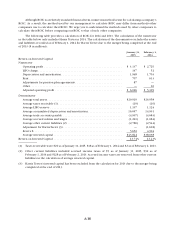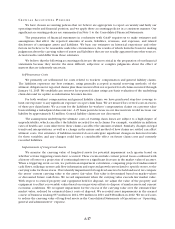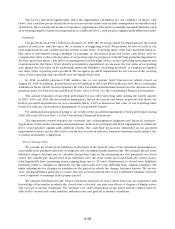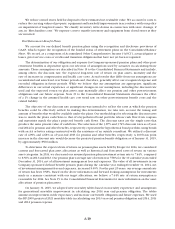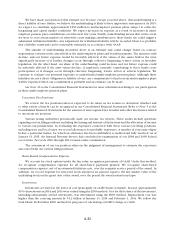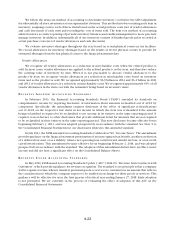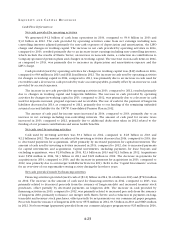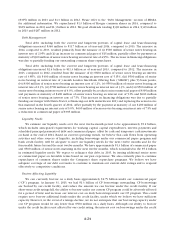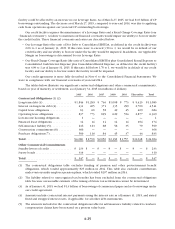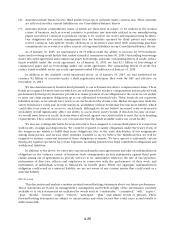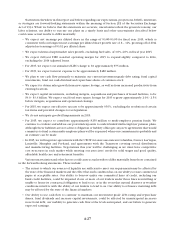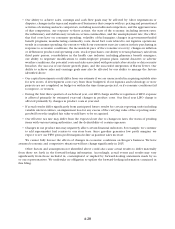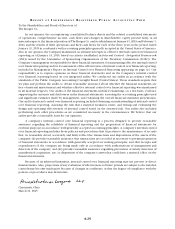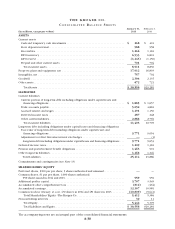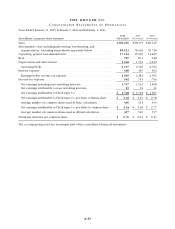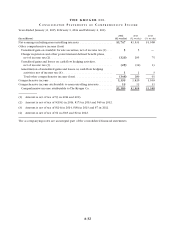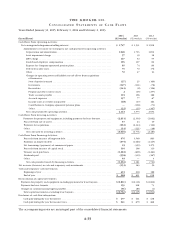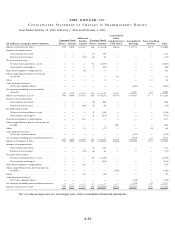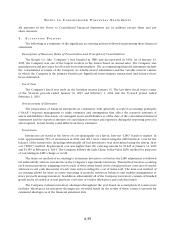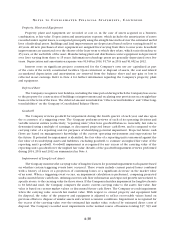Kroger 2014 Annual Report Download - page 91
Download and view the complete annual report
Please find page 91 of the 2014 Kroger annual report below. You can navigate through the pages in the report by either clicking on the pages listed below, or by using the keyword search tool below to find specific information within the annual report.A-26
(6) Amounts include funds owed to third parties for projects currently under construction. These amounts
are reflected in other current liabilities in our Consolidated Balance Sheets.
(7) Amounts include commitments, many of which are short-term in nature, to be utilized in the normal
course of business, such as several contracts to purchase raw materials utilized in our manufacturing
plants and several contracts to purchase energy to be used in our stores and manufacturing facilities.
Our obligations also include management fees for facilities operated by third parties and outside
service contracts. Any upfront vendor allowances or incentives associated with outstanding purchase
commitments are recorded as either current or long-term liabilities in our Consolidated Balance Sheets.
As of January 31, 2015, we maintained a $2.75 billion (with the ability to increase by $750 million),
unsecured revolving credit facility that, unless extended, terminates on June 30, 2019. Outstanding borrowings
under the credit agreement and commercial paper borrowings, and some outstanding letters of credit, reduce
funds available under the credit agreement. As of January 31, 2015, we had $1.3 billion of borrowings of
commercial paper and no borrowings under our credit agreement. The outstanding letters of credit that
reduce funds available under our credit agreement totaled $10 million as of January 31, 2015.
In addition to the available credit mentioned above, as of January 31, 2015, we had authorized for
issuance $2 billion of securities under a shelf registration statement filed with the SEC and effective on
December 13, 2013.
We also maintain surety bonds related primarily to our self-insured workers’ compensation claims. These
bonds are required by most states in which we are self-insured for workers’ compensation and are placed with
predominately third-party insurance providers to insure payment of our obligations in the event we are unable
to meet our claim payment obligations up to our self-insured retention levels. These bonds do not represent
liabilities of ours, as we already have reserves on our books for the claims costs. Market changes may make the
surety bonds more costly and, in some instances, availability of these bonds may become more limited, which
could affect our costs of, or access to, such bonds. Although we do not believe increased costs or decreased
availability would significantly affect our ability to access these surety bonds, if this does become an issue,
we would issue letters of credit, in states where allowed, against our credit facility to meet the state bonding
requirements. This could increase our cost and decrease the funds available under our credit facility.
We also are contingently liable for leases that have been assigned to various third parties in connection
with facility closings and dispositions. We could be required to satisfy obligations under the leases if any of
the assignees are unable to fulfill their lease obligations. Due to the wide distribution of our assignments
among third parties, and various other remedies available to us, we believe the likelihood that we will be
required to assume a material amount of these obligations is remote. We have agreed to indemnify certain
third-party logistics operators for certain expenses, including pension trust fund contribution obligations and
withdrawal liabilities.
In addition to the above, we enter into various indemnification agreements and take on indemnification
obligations in the ordinary course of business. Such arrangements include indemnities against third party
claims arising out of agreements to provide services to us; indemnities related to the sale of our securities;
indemnities of directors, officers and employees in connection with the performance of their work; and
indemnities of individuals serving as fiduciaries on benefit plans. While our aggregate indemnification
obligation could result in a material liability, we are not aware of any current matter that could result in a
material liability.
OU T L O O K
This discussion and analysis contains certain forward-looking statements about our future performance.
These statements are based on management’s assumptions and beliefs in light of the information currently
available to it. Such statements are indicated by words such as “comfortable,” “committed,” “will,” “expect,”
“goal,” “should,” “intend,” “target,” “believe,” “anticipate,” “plan,” and similar words or phrases. These
forward-looking statements are subject to uncertainties and other factors that could cause actual results to
differ materially.


